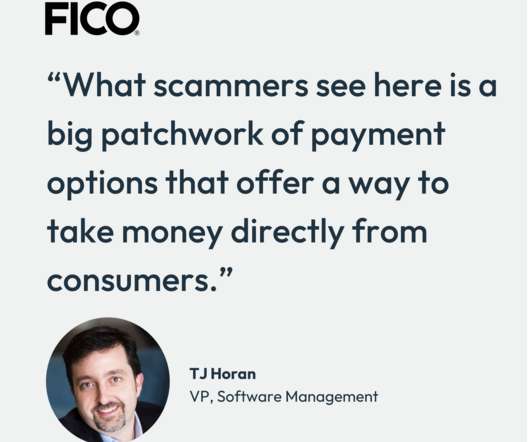Recap of Money 20/20 USA 2023 and 10 Banking Thoughts
South State Correspondent
OCTOBER 26, 2023
As can be seen, the conference largely revolved around payments, artificial intelligence, fintech partnerships/management, regulation, and fraud/identity in its various forms. Fraud & Identity: By far, the largest number of vendors and conversations were over fraud and identity. Maybe a topic for next year?














Let's personalize your content